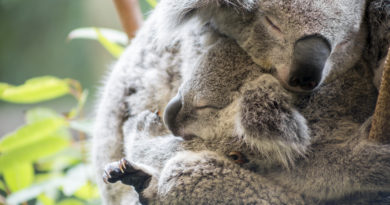Top 10 Underwater Wildlife Encounters in the Galápagos
The Galápagos, offers incredible wildlife encounters including bumbling blue-footed boobies, playful seal colonies, and iconic giant tortoises.
But island wildlife is just one side of the experience. The Galápagos’ ocean habitat is nearly six times larger than all 21 of the archipelago’s islands combined. The surrounding seas are home to the majority of wildlife in the Galápagos and can be some of the best places to spot and safely interact with animals in the wild.
Since no visit to the Galápagos is complete without getting your feet wet, let’s jump-in to the top 10 underwater wildlife encounters in the Galápagos.
10. Pacific Green Sea Turtle
Pacific green turtles are an endangered species of sea turtle that breed and nest in the Galápagos. Thanks to conservation efforts, the Galápagos is one of only a few locations in the world where the turtles are found in abundance year-round. Green sea turtles swim with surprising grace and are a joy to spot on a snorkel or dive trip.
9. Chocolate Chip Sea Star
Many sea star species call the coral reefs and rocky seascapes of the Galápagos home, but the chocolate chip sea star inches out the competition on this list with its whimsical name and bright yellow body. Though the symmetrical black points on the sea star may look like chocolate chips, these spikes act as armor to deter predators from taking a bite. These colorful bottom-dwellers and other invertebrates are often overlooked when diving or snorkeling in the Galápagos.
8. Galápagos Penguin
The Galápagos penguin is the only penguin species found north of the equator. Rather clumsy on land, the penguins turn into tiny torpedoes in the water. Snorkelers can expect the birds to zoom-by, leaving swirling trails in their wake. Like many other species in the Galápagos, these endangered penguins are endemic to the islands, meaning they are found nowhere else in the world.
7. Manta Ray
Many ray species reside in the Galápagos, including beautiful spotted eagle rays and vibrant schools of golden rays. Manta rays, however, are a local favorite among snorkelers and divers because of their size and intelligence. Mantas have the largest brain-to-size ratio of any cold-blooded fish and can even recognize themselves in a mirror. Though mantas can be found year-round, December-May is “manta season” and the best time to see these extraordinary animals in the Galápagos.
6. Pacific Seahorse
The Pacific seahorse is the smallest animal on this list despite its other name, “the giant seahorse.” The shallow reefs around the Galápagos islands offer some of the best opportunities to try and spot these elusive animals anchoring themselves to corals and seagrass. As seahorse populations around the world decline due to poaching, the protected waters around the Galápagos islands remain a bright spot for this delicate species.
5. Marine Iguana
Marine iguanas are not the cutest or cuddliest animals in the Galápagos (Darwin once referred to them as “hideous-looking”). However, they stand out in their family tree as the only marine iguanas and are one of the Galápagos’ prime examples of evolution. Millions of years ago, some of their land-dwelling ancestors floated to the Galápagos from the South American mainland and slowly adapted to island life, evolving into agile swimmers that forage on marine algae and seaweed. Year-round visitors can snorkel among the marine iguanas as they feed in the coastal waters, an experience found only in the Galápagos.
4. Scalloped Hammerhead Shark
Hammerhead sharks are some of the most well-known permanent residents of the Galápagos oceans and are a bucket-list item for many divers. At certain times of year, schools of hundreds of scalloped hammerhead sharks can be observed near the remote islands of Wolf and Darwin. There is still a lot of mystery surrounding hammerhead behavior, but scientists just recently identified a hammerhead shark nursery site near Santa Cruz island in the Galápagos. This discovery could help researchers study and better protect this endangered species.
3. Galápagos Sea Lion
Sea lions are abundant along the coasts the Galápagos, often seen snoozing on benches in Santa Cruz or blanketing sandy beaches in large colonies. While hikers will mostly find sleepy sea lions basking in the sun, visitors that encounter sea lions in the water get to experience their more playful side. Curious by nature, sea lions will swim in circles around snorkelers and divers, poke their noses up to underwater cameras, and frolic in bubbles. Such antics are sure to brighten any snorkel or dive trip.
2. Bottlenose Dolphin
Traveling between the Galápagos islands by boat means ample opportunities to spot whales and dolphins in the open ocean. Bottlenose dolphins and common dolphins reside in the Galápagos year-round. And, if you are lucky enough to get close to a pod of dolphins, and your tour guide gives the OK, then… jump in! You’ll likely hear the dolphin echolocation underwater before you see them, a reminder that they are just as curious about you as you are of them. Looking into a dolphin’s eye as it investigates you is a rare and unforgettable moment for any animal-lover.
1.Whale Shark
Whale sharks are the largest shark species in the world. Unlike their toothier relatives, these gentle giants are filter feeders that slowly forage for plankton and small fish, making them ideal diving partners. Between June and November, whale sharks follow currents to the waters near the islands Wolf and Darwin. Around 90% of the whale sharks visiting the Galápagos each year are pregnant females, but researchers are still uncovering why. Current studies are underway in Galápagos and scientists hope to learn more about whale shark behavior and ultimately aid in the conservation of this endangered species. If seeing these large and mysterious fish up-close is on your bucket list, the Galápagos ranks among the best places for this once-in-a-lifetime experience.
By Hallie Sacks, WWF-US








